Abstract
Spinach (Spinacia oleracea) plants were subjected to salt stress by adding NaCl to the nutrient solution in increments of 25 millimolar per day to a final concentration of 200 millimolar. Plants were harvested 3 weeks after starting NaCl treatment. Fresh and dry weight of both shoots and roots was decreased more than 50% compared to control plants but the salt-stressed plants appeared healthy and were still actively growing. The salt-stressed plants had much thicker leaves. The salt-treated plants osmotically adjusted to maintain leaf turgor. Leaf K+ was decreased but Na+ and Cl− were greatly increased.
The potential photosynthetic capacity of the leaves was measured at saturating CO2 to overcome any stomatal limitation. Photosynthesis of salt-stressed plants varied only by about 10% from the controls when expressed on a leaf area or chlorophyll basis. The yield of variable chlorophyll a fluorescence from leaves was not affected by salt stress. Stomatal conductance decreased 70% in response to salt treatment.
Uncoupled rates of electron transport by isolated intact chloroplasts and by thylakoids were only 10 to 20% below those for control plants. CO2-dependent O2 evolution was decreased by 20% in chloroplasts isolated from salt-stressed plants. The concentration of K+ in the chloroplast decreased by 50% in the salt-stressed plants, Na+ increased by 70%, and Cl− increased by less than 20% despite large increases in leaf Na+ and Cl−.
It is concluded that, for spinach, salt stress does not result in any major decrease in the photosynthetic potential of the leaf. Actual photosynthesis by the plant may be reduced by other factors such as decreased stomatal conductance and decreased leaf area. Effective compartmentation of ions within the cell may prevent the accumulation of inhibitory levels of Na+ and Cl− in the chloroplast.
Full text
PDF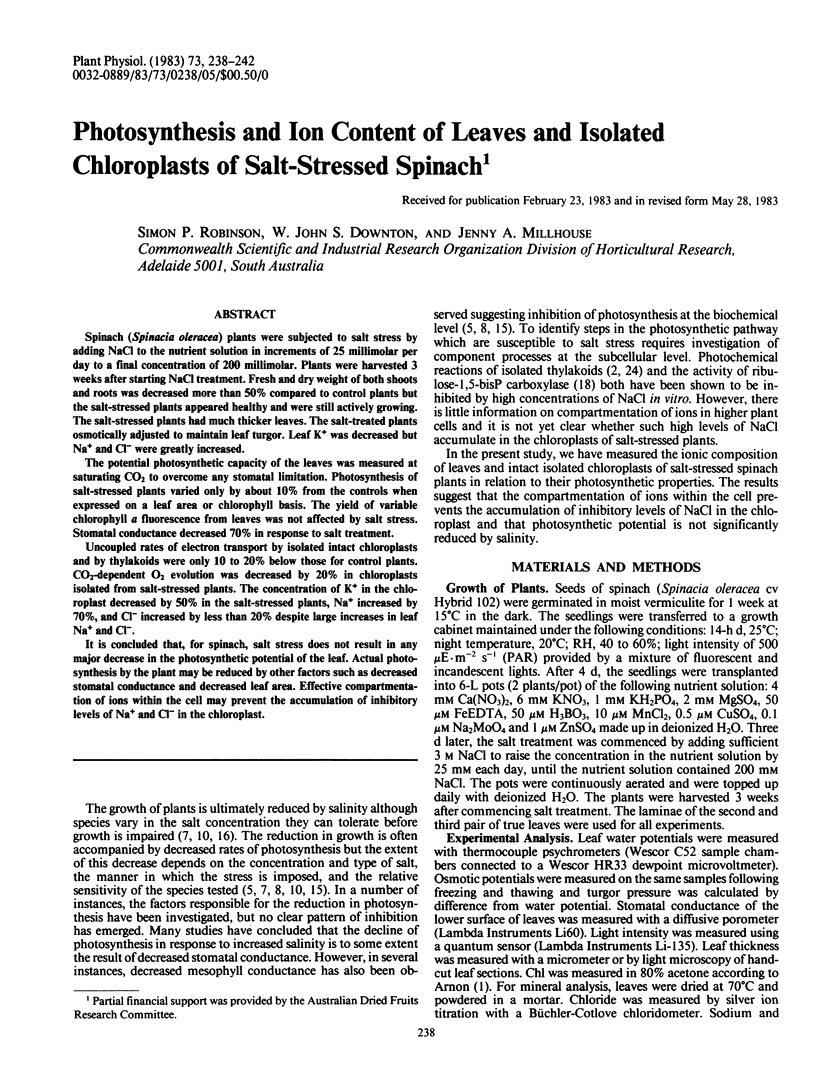
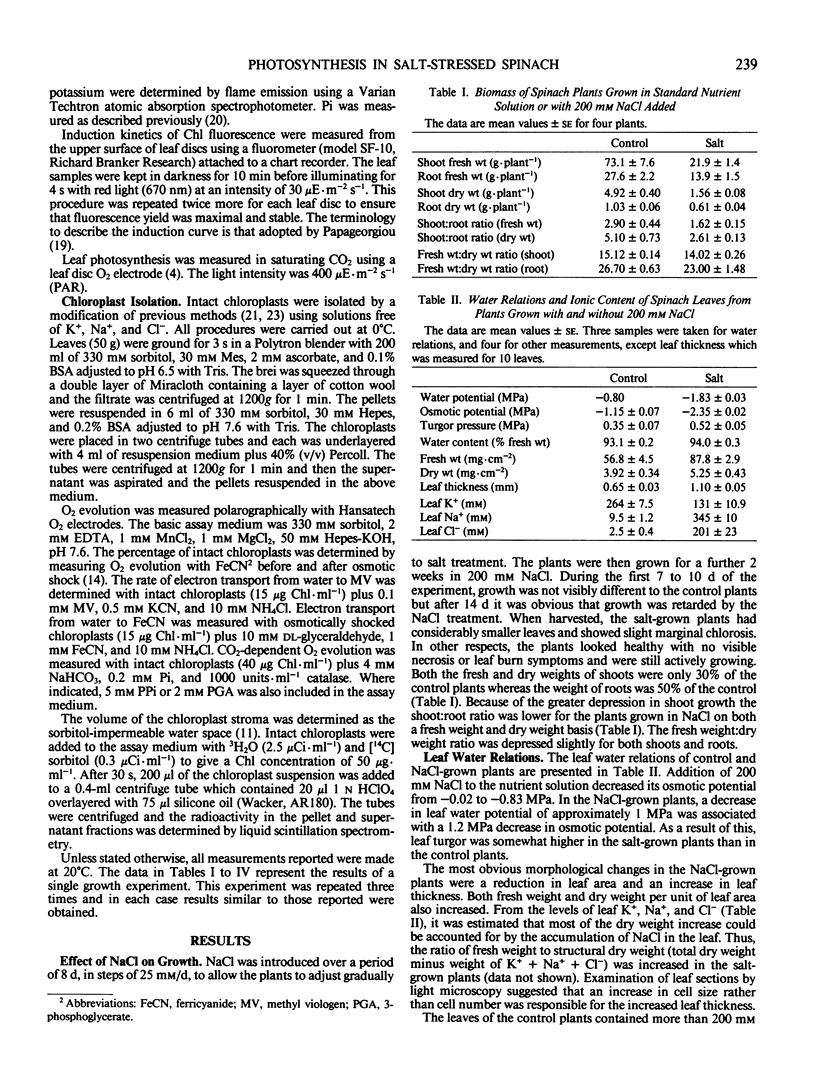
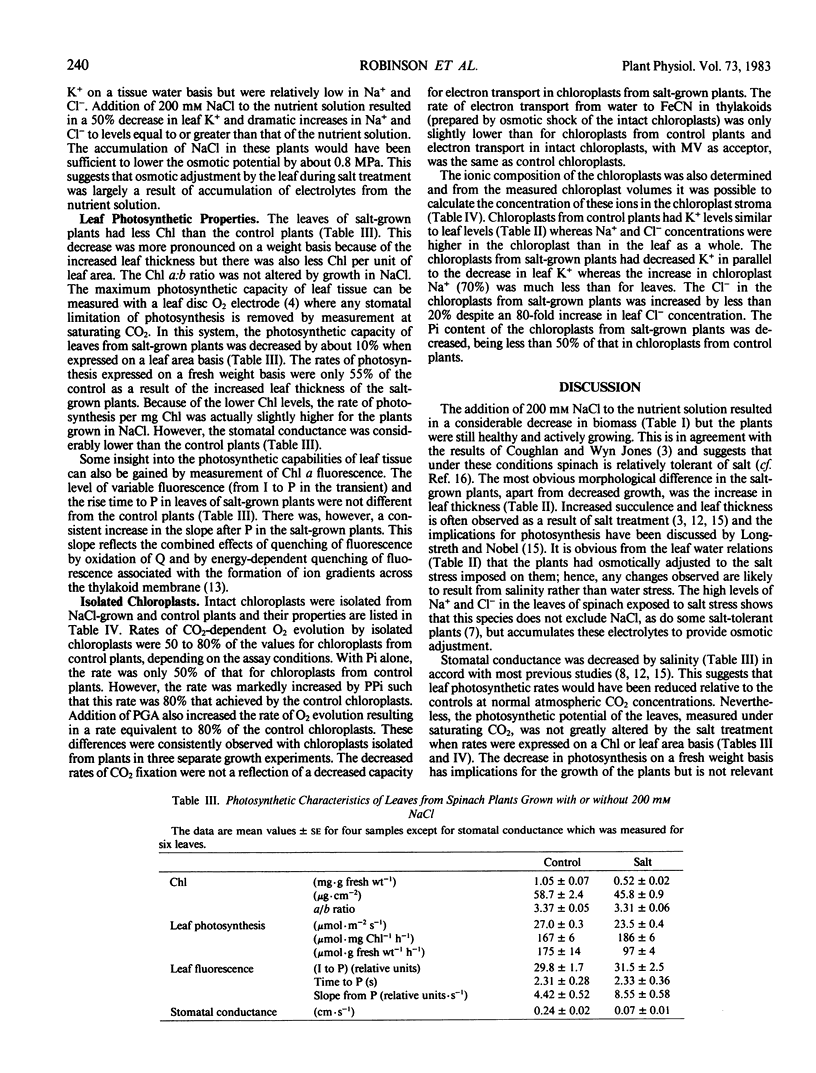
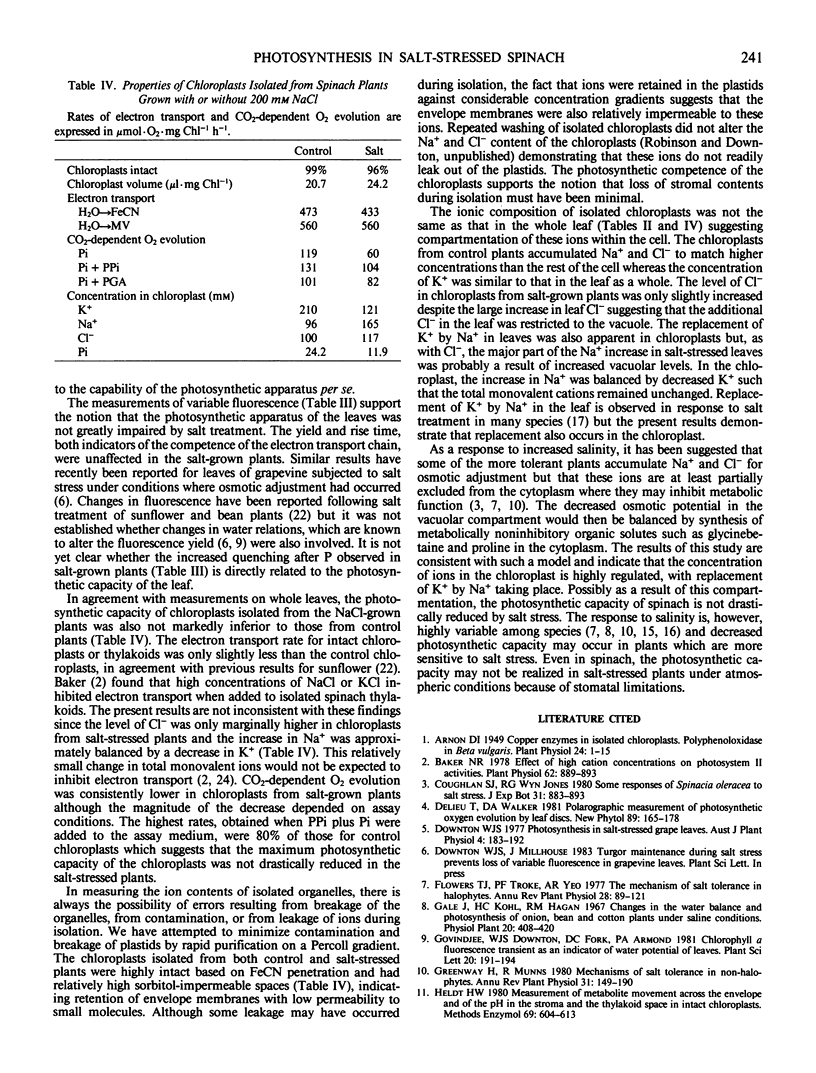
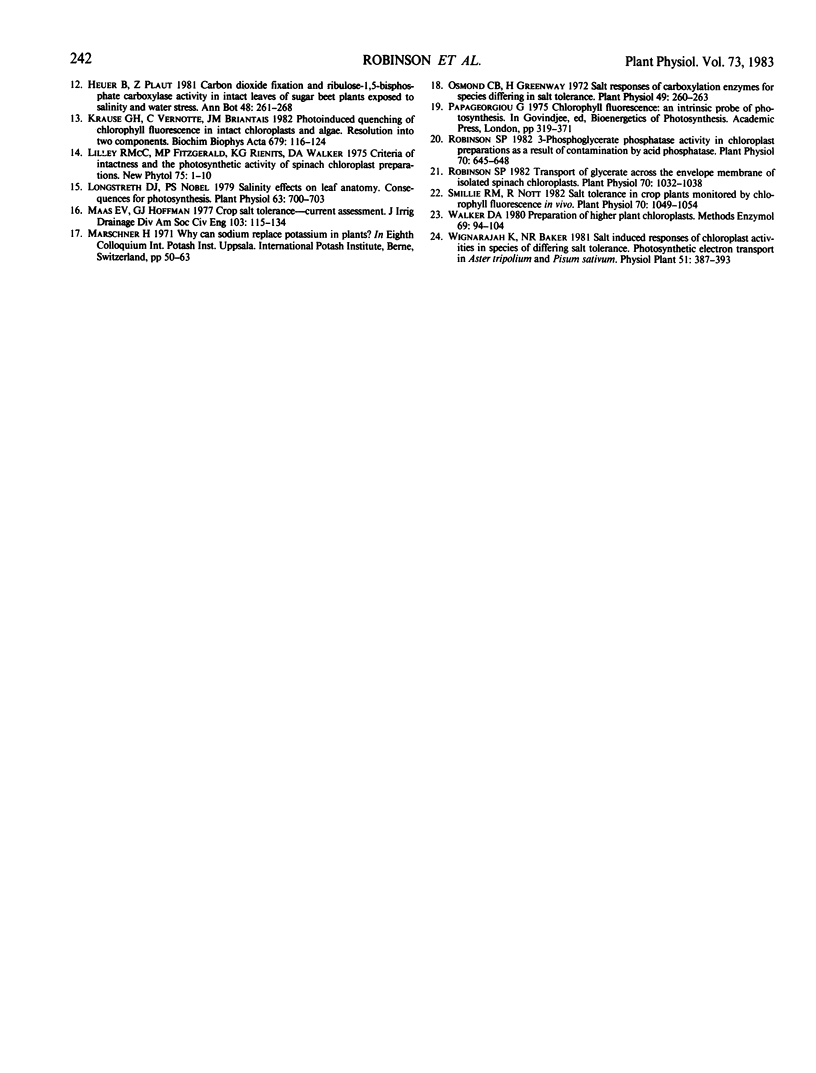
Selected References
These references are in PubMed. This may not be the complete list of references from this article.
- Arnon D. I. COPPER ENZYMES IN ISOLATED CHLOROPLASTS. POLYPHENOLOXIDASE IN BETA VULGARIS. Plant Physiol. 1949 Jan;24(1):1–15. doi: 10.1104/pp.24.1.1. [DOI] [PMC free article] [PubMed] [Google Scholar]
- Baker N. R. Effect of High Cation Concentrations on Photosystem II Activities. Plant Physiol. 1978 Dec;62(6):889–893. doi: 10.1104/pp.62.6.889. [DOI] [PMC free article] [PubMed] [Google Scholar]
- Longstreth D. J., Nobel P. S. Salinity effects on leaf anatomy: consequences for photosynthesis. Plant Physiol. 1979 Apr;63(4):700–703. doi: 10.1104/pp.63.4.700. [DOI] [PMC free article] [PubMed] [Google Scholar]
- Osmond C. B. Salt responses of carboxylation enzymes from species differing in salt tolerance. Plant Physiol. 1972 Feb;49(2):260–263. doi: 10.1104/pp.49.2.260. [DOI] [PMC free article] [PubMed] [Google Scholar]
- Robinson S. P. 3-phosphoglycerate phosphatase activity in chloroplast preparations as a result of contamination by Acid phosphatase. Plant Physiol. 1982 Sep;70(3):645–648. doi: 10.1104/pp.70.3.645. [DOI] [PMC free article] [PubMed] [Google Scholar]
- Robinson S. P. Transport of Glycerate across the Envelope Membrane of Isolated Spinach Chloroplasts. Plant Physiol. 1982 Oct;70(4):1032–1038. doi: 10.1104/pp.70.4.1032. [DOI] [PMC free article] [PubMed] [Google Scholar]
- Smillie R. M., Nott R. Salt tolerance in crop plants monitored by chlorophyll fluorescence in vivo. Plant Physiol. 1982 Oct;70(4):1049–1054. doi: 10.1104/pp.70.4.1049. [DOI] [PMC free article] [PubMed] [Google Scholar]


